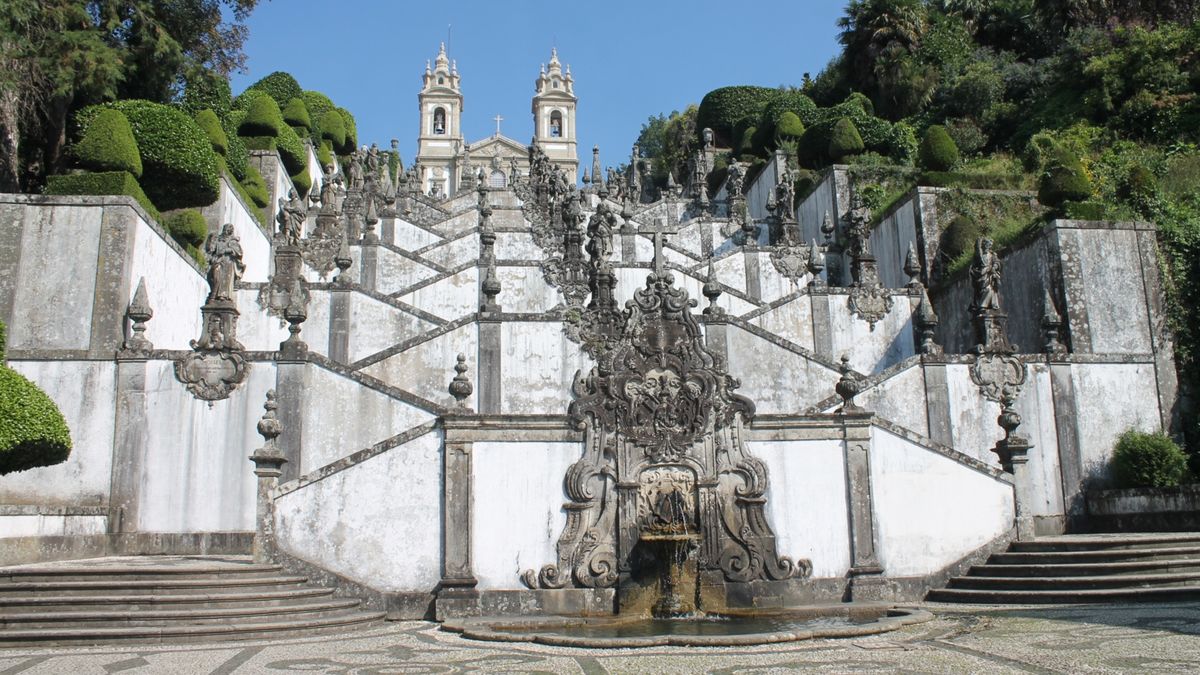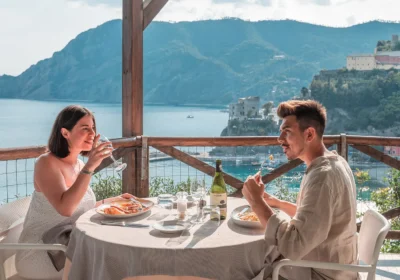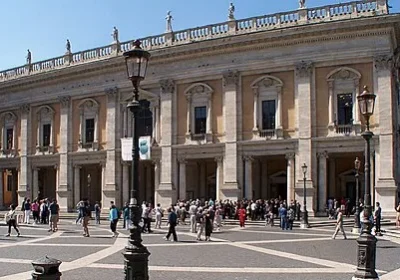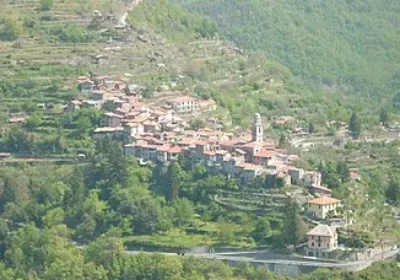Much of Braga’s attractions are concentrated in the small Old Town. The road here passes through the Arco da Porta Nova. The first gates were built in the 16th century, and in 1772 they were replaced by a Baroque structure. In the center of the Old Town, in the middle of the Gardens of St. Barbara stands the Cathedral. Its construction began in 1089 and ended in the middle of the XIII century. The Chapel of the Kings, where Count Henrique and Countess Teresa, the parents of the first king of Portugal, are buried, deserves special attention. During our tour of Braga we will visit not only the Cathedral, but also the Archbishop’s Palace, also located in the Gardens of St. Barbara. The three wings of this building were built in different eras: the eastern wing is an example of the Gothic style, the western and southern wings are Baroque. At present, the Archbishop’s Palace houses the archives, the university rectorate and the City Library, which has 10,000 manuscripts and 300,000 books. Braga is home to many churches. Among the most interesting are the Misericordia (Misericordia), built in the 16th century in the Italian Renaissance style, the Capela da Conceiçao (Capela da Conceiçao), built at the same time, and the 18th-century São João de São Paulo (São João de São Paulo). Sao Joao de Souto (Sao Joao de Souto) and Santa Cruz (Santa Cruz), which has a rococo facade. Braga’s most famous landmark, the Church of Christ on Calvary, is not in the city itself, but 6 km away. It is reached by a road, along which there are chapels, statues, fountains, symbolizing the 14 stops of Jesus Christ on the way to the place of execution. To the entrance to the temple a staircase rises up the hillside, surrounded by gardens since the XV century. Free time for lunch.
n
After which we will travel with you to the town of Guimarães. One of the main attractions of the town is the hilltop Castelo de Guimarães (Castelo de Guimarães) or Castelo de San Miguel. Most of the towers and gates of the fortress, built in the shape of a heraldic shield, have survived to this day. In the western wing there is the chapel of São Miguel in Romanesque style, where the first king of Portugal, Afonso I, was baptized.A vacation in Guimaraes will allow you to enjoy the atmosphere of the medieval town, which is associated with several legends. One of them explains the name of the main square Largo da Oliveira (Largo da Oliveira). While in town or on a tour of Guimaraes, you can visit the Palace of Paso dos Duques, which was built in the 15th century and belonged to the Dukes of Bragança. The exterior of this building has a Burgundian style. The palace was neglected for a long time, but was restored in the 1930s. It now houses a museum with furniture, porcelain, faience and tapestries depicting the Portuguese conquest of North African cities.
n

















